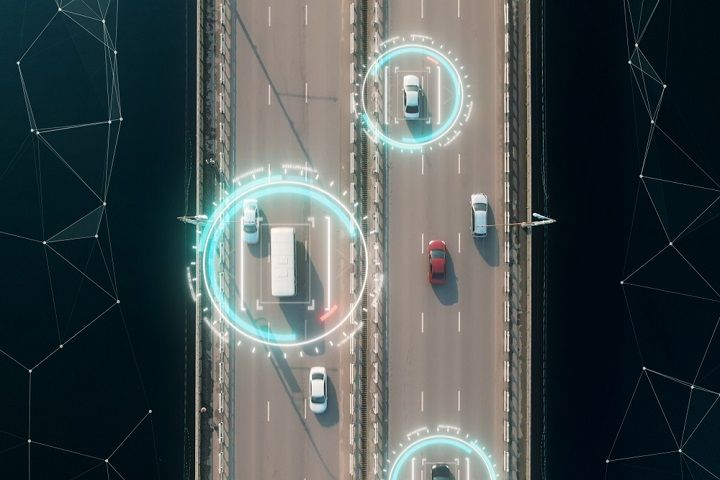Fleet management is undergoing rapid growth as fleet managers look for software and technology that helps them reduce fuel and operational costs, mitigate risk, and improve productivity.
In fact, a 2019 study by TD Bank found that 52% of respondents cite changing technology as the biggest challenge for their fleet.
Fleet managers are looking for technology that collects the right data to help them better manage their fleet. With today’s technology mix including telematics, Active Vehicle Management, and Artificial Intelligence (AI) and Augmented Reality (AR), fleet managers have never had an easier time collecting the data they need and making improvements to their operations.
Fleet managers who invest in these tools and integrate them with their operations can benefit from immediate wins for their business, as well as future-proof their fleet. For these fleet managers who are feeling challenged by changing technology, let’s cover some technology and operational trends to keep an eye on.
Top trends in fleet management
1. Data collection and management
Today’s telematics software collects an impressive amount of data about your vehicles, drivers, and daily operations, like:
- Fleet availability rate
- Vehicle health and DTC codes
- Technician productivity
- Fuel use
- Average mileage per vehicle
- GPS tracking
- Routing and geofences
- Trip data including starts, stops, vehicle speeds, and idle time
- Driver scorecards and behaviors
This complete visibility into your fleet is powerful but can also lead to analysis paralysis. One trend that’s gaining traction in the fleet industry is the creation of data management roles. This person’s responsibility is to objectively analyze the data and translate it into process improvements or changes to policies for a higher functioning fleet.
Often this person will be tasked with specific challenges, such as reducing accidents or improving productivity, and then they dig through the data to solve the root of the problem, not just address the symptoms.
This person may also address the integrity of the data and assist with the deployment of new technology to ensure a smooth integration and sharing of data.
Data is moving from being an asset for a fleet to being treated as currency as telematics data is supremely valuable and can be used to negotiate better contracts and deals with equipment and solution providers.
2. Driver and vehicle safety
With GPS tracking and driver pairing, fleet managers can better monitor drivers and hold them accountable for following procedures and safety policies.
We’ll continue to see growth in technology that focuses on driver behaviors, like safety alerts, face tracking for driver fatigue, enhanced driver scorecards, and safety features like Distracted Driver Prevention (DDP™) and seat belt compliance.
“Manage your vehicles, not your drivers,” is the motto around Derive as our engine calibrations and Active Vehicle Management (AVM) technology focuses on improving the vehicle itself for fuel efficiency and safety. These fleet management solutions are complementary to telematics but take the data analysis out of the equation. Instead of coaching drivers to resist using their cell phone behind the wheel, DDP locks the driver’s phone to a driver app until they’re parked.
Safety features are constantly improving and evolving as we collect more and more data about driver behaviors and identify ways to make both the vehicle safer and enforce driver compliance with safety policies.
3. Automation and machine learning
We still have a few years ahead of us before self-driving vehicles take over the road, but today our vehicles are being made with or upfitted with advanced safety technology, like lane assistance or anti-lock brakes.
Manufacturers and telematics providers are investing heavily in automated technology and machine learning. AI-enabled vehicles are gathering tons of information on speed limits, road signs, and other things.
4. Investing in your workforce
Though fleet management technology helps automate and streamline processes, many fleets are looking for ways to invest in their employees and retain drivers.
Drivers need to work with the technology your fleet uses, not against it. Fortunately, many of those entering the workforce have adapted to constant connectivity with their smartphones and home assistants, so the use of technology in the vehicle is simply seen as standard operating procedure. It makes their jobs more efficient and leads to more productivity.
Fleet managers need to be transparent about the technology they use as well as stress the benefits it gives the driver, such as increased safety or exoneration in the case of an accident.
Fleet managers should also focus on other ways to attract talent like offering signing bonuses, providing professional development, giving out bonuses based on driver scorecard data, as well as empowering them to be safety or technology advocates by creating employee-based committees.
by Derive Systems – Staff Writer
Source: https://www.automotive-fleet.com
FLEET MANAGEMENT AUDIT
Fleet management is the use of a set of vehicles in order to provide services to a third-party, or to perform a task for our organization, in the most efficient and productive manner with a determined level of service and cost.
Fleet management activities are shown in the following graph 1:

Graph 1: fleet management activities
The proposal audit analyses and assesses all fleet management activities shown in the graph 1, and its main goals are:
- Know the overall status of the fleet management activities
- Provide the analysis, the assessment, the advice, the suggestions and the actions to take in order to cut costs and increase the efficiency and efficacy of the fleet management activities
With the information obtained, we’ll elaborate a report that holds the overall status of the fleet management as well as the suggestions, recommendations and the measures to take in order to cut costs and optimize the fleet management activities.
CLICK ON THE FOLLOWING LINK TO DOWNLOAD THE PROPOSED FLEET MANAGEMENT AUDIT:



